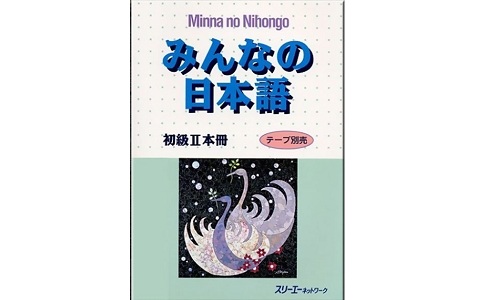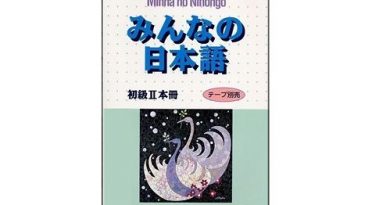Learn minna no nihongo lesson 2
Learn minna no nihongo lesson 2. hi everyone. In this post, Learn Japanese Daily will introduce you the very first lessons in the Japanese course-book : Minna no nihongo (Japanese for everyone)
Learn minna no nihongo lesson 2:
Summary :
(for shorter summary, check here : Summary of Minna no nihongo coursebook lesson 2)
In the lesson 2 will introduce to learners the vocabularies part, structures and additional knowledge of vocabulary
In the first part, the vocabulary divided into 5 part that is demonstrative pronouns, school stationery, machine electronic, food and drink the last is language, same as the last lesson, after learning the vocabulary, learners will found out some structures which are use in daily life. First is demonstrative pronouns:
これthis (the object near the speaker)
それ there (the object near the listener )
あれ that (the object is far from both the speaker and listener)
To combine with a noun like this pen, that ruler…. the structure will be:
この~ this N その~that N and あの~ that N
The vocabulary about school stationer:
ほん: book
じしょ: dictionary
ざっし: magazine
しんぶん: newspaper
ノート : note book
てちょう : handbook
めいし : business card
えんぴつ : pencil
ボールペン : ball-point pen
シャープペンシル : mechanical pencil
かばん : bag
かさ : umbrella
つくえ : table
いす: chair
カード : card
Next, machine and other electric equipment:
テープ : cassette
テープレコーダー : tape recorder
テレビ : television
ラジオ : radio
カメラ : camera
コンピューター : computer
じどうしゃ : car
かぎ : key
とけい : clock
Next group, food and drink
チョコレート : chocolate
コーヒー : coffee
Last group, language:
えいご : English
にほんご: Japanese
The way to say some other language just put ご for exampleベトナムご Vietnamese, タイご Thai
Next is some communicative structures.
When confirming a information, Japanese people say そう it means yes, that is… In contrary, when it is incorrect ちがいますmeans wrong. In case to confirm the information again like, Really? It will be そうですか. When Japanese people say あのうit means they are consider about something.
In the first time meet Japanese people usually brings some small present to express their heart from themselves, when giving the present they say ほんの きもちですmeans “I am very much obliged to you”and say どうぞ (please take it, or use it). The person who received the present have to say どうもありがとうございますit mean “Thank you very much”, this sentence is use for politeness, normally they say どうもis enough, thank you. At the end of the first time meet they say これからおせわになりますmeans “Thank you for your support in advance” and the other person will replyこちらこそよろしく means like “I am the one that should really be saying that”
Next part is Grammar
First structure is the way to say the direction of the object, it also call the demonstrative pronouns これ。それ。あれはNです
This structure had appeared in lesson 1, the different point in here is the noun of the sentence is change into demonstrative pronounsこれ、それ、あれ, in grammar all the demonstrative is use like a noun.
これto show an object which is near the speaker, for example “This is a dictionary” これはじしょです
それ to show an object which is near the listener, for example you want to ask the dictionary near the person who you are talking, we have to say それはじしょですmeans “ That is a dictionary”
In here, これexpress the object near speaker, それ express the object near listener, あれ express the object is far from both the listener and speaker means over there. For example: “Over there is a school” あれはがっこうです
The second structure is also about direction of the subject この、その、あのthe role is to modify nouns of the subject, nouns in here can be human or object.
For example “That person is Vietnamese” it will be あのひとはベトナム人です。
“This is Aki book” it will be このほんは秋さんのです
To confirm the information そうです・そうじゃありません
if it is correct はい、そうです
and incorrect いいえ、そうじゃありませんor sometimes it can beいいえ、ちがいます .
For example: “Is this Aki book?” この本は秋さんのですかif yes, はい、そうです
Another example: “Is that a magazine”, No it isn’t
it will be それは雑誌ですか。いいえ、そうじゃありません
The next structure is the choice questions, this structure is used to ask the listener give choice, then they would like to chose the 1 or 2.
(1)か、(2)か
Notice that in this type of question, we don’t answer it はいor いいえthe answer for this question is we have to choose the first or second. For example, “Is this a book or magazine?” これはほんですか、ざっしですか the answer is the book これは ほんですor magazine, don’t use はいor いいえ
the structure N1のN2presents the content of the object, or specificN1のN2 means N1 is explain N2. For example, これはコンピューターの本です this mean “This is a book about computers”, it can be said のis the letter go on with two nouns, For instance日本の本stay between 2 nouns日本、本
To express the reception with a new informationそうですか means Really?
このかさはあなたのですか。いいえ、あきさんのです。Is this your umbrella? No, is Aki umbrella. In here the umbrella is from Aki, to express the feelings we say そうですか.
Japan is the country which has a lot of family names, with the large amount of names and the difficult way to read or write, it makes foreigner feel difficult to call. But besides that, there is some common family names in Japan.
さとう
すずき
たかはし
たなか
わたなべ
いとう
なかむら
やまもと
こばやし
さいとう
かとう
よしだ
やまだ
ささき
まつもと
やまぐち
きむら
いのうえ
あべ
はやし
By the way, in the way of calling name in Japan, almost Japanese people call their family name, this is the politeness way to call in school, company or solemn case…they only call their name when they have close relationship like friends or family.
Moreover, when moving to a new home or place, Japanese people usually brings some gift for their neighbor such as bath towel, bake of soap or sweet things. The subject of the dialogue in this lesson is also about the custom of giving present to the neighbor of new place.
The situation of the dialogue is: Yamada is moving to the new home near Tanaka and they exchange greetings for the first time meet.
First, after opening the door, Tanka: はい、だれですか “Who is it?”
Yamada: しつれいします。私は山田です。となりのへやです “ Excuse me sir, I am Yamada, I’m new here
Tanaka: はい、はじめまして、どうぞ “ oh yes, nice to meet you, welcome in”
Yamada: ありがとう。あのう。これはほんの気持ちです “Thank you” in here means This gift is to show my humble or feeling
Tanka: ええ、ありがとう。これはなんですか Thank you, what is it?
Yamada: コーヒーです。どうぞ ” Coffee, please take it.”
Tanaka: ありがとう “Thank you”
Next in the culture corner, the lesson will give all learners a lovely song. It names きらきらぼし means twinkle stars
Next, is the resume of the lesson 2/ In vocabularies learners have learned 5 groups: demonstrative pronouns, school stationer, machine and electronic, food and drink.
Then some communicative structures. The grammar part, learners know the structure about direction of object これ, それ , あれ choice question, confirm the content in question, the structure that express the reception そうですか and the second meaning of the structure N1のN2
Since the course of learning Japanese will be long. Learners should pay attention in each lesson, doing homework to remember all the
Above is Learn minna no nihongo lesson 2. Check out the next lesson here : Learn minna no nihongo lesson 3 or see other similar lesson in category : learn japanese for beginer or learn japanese with minna no nihongo. We hope with the instruction in this post, you will find that learning Japanese is not so difficult and you can learn Japanese by yourself. If you have any question, just leave us your question below the post.
Stay with us on :
Facebook - Twitter - Pinterest - Reddit


